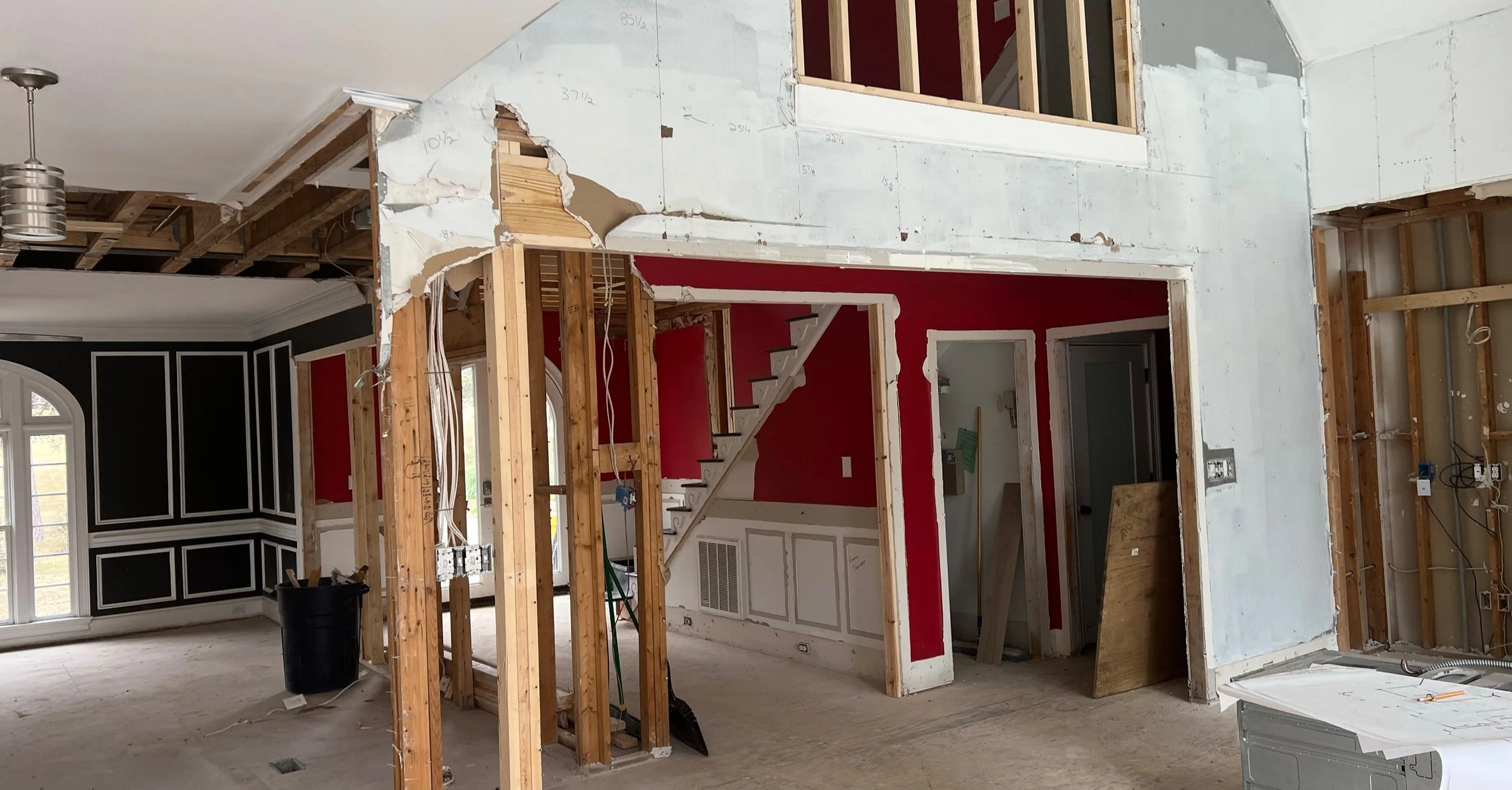Interior Wall Removal: A Basic Guide for Safely Enhancing Your Home
Removing an interior wall can be a satisfying renovation project that opens up space and enhances the layout and value of your home. Whether you want to create an open-concept living area, expand a room, or update the aesthetics of your home, interior wall removal continues to be one of the more popular and often least expensive home improvements.
How to Know if it is a DIY Project
Several factors will determine whether or not this is a DIY project: the homeowner’s skill level, whether the wall contains plumbing or electrical components, and, most importantly, whether or not the wall is load bearing.
Load bearing walls are critical structural elements in your home that transfer weight from the roof to the foundation. The homeowner who blindly goes in and knocks down a load-bearing wall could quickly turn their home into a falling house or cards. Non-load-bearing walls, sometimes called divider or curtain walls, are merely cosmetic. Removing them does not affect the structural integrity of the home.
Determining a Load Bearing Wall
The first step is determining if the wall you wish to remove is load bearing. Ultimately, you will want to consult with a qualified structural engineer. Here are a few tell-tale signs that a wall is load bearing:
Almost all exterior walls are load bearing
Walls that run perpendicular to joists in the attic or crawl space
Walls that connect to a support beam
Walls that connect to the foundation
If a wall is load bearing, the following steps are required to have it removed:
Obtain a letter of recommendation from an engineer
Pull proper building permits
Hire a licensed contractor to perform the work
Make no mistake; messing with load bearing walls is dangerous and is not a DIY project.
Steps for Removing an Interior Wall
Removing non-load-bearing walls – while easier and far less dangerous – can still present challenges if the wall contains electrical wiring and/or plumbing. We recommend using licensed electricians and plumbers to evaluate and re-route the electrical and plumbing components as needed. Local building codes may also require permits for this type of work.
Depending on the complexity, removing an interior wall can take three to five days, including cosmetic work. A homeowner can most likely stay in their home during the project and even help a little. We always ask homeowners to remove the furniture and personal belongings from the room(s) where a wall is being removed. We will assist with protecting floors as needed and creating plastic barrier walls to prevent dust and debris from traveling through the house.
Individual contractors will handle a wall removal project differently, but Wolfe always has a project manager available to answer any questions and give updates as often as desired. We update the homeowner with any necessary changes and seek approval before proceeding. Job site cleanliness is also important to us, and we clean the job site to the best of our ability at the end of each day.
Removing an interior wall can be a rewarding project that transforms your living space, but it should be approached with caution and a clear plan. Always consult with professionals before any work begins to determine the wall's structural significance or the presence of utilities. Doing so will allow you to enjoy the enhanced space and design possibilities it offers with peace of mind. As always, we are available to help and answer any questions you may have.

